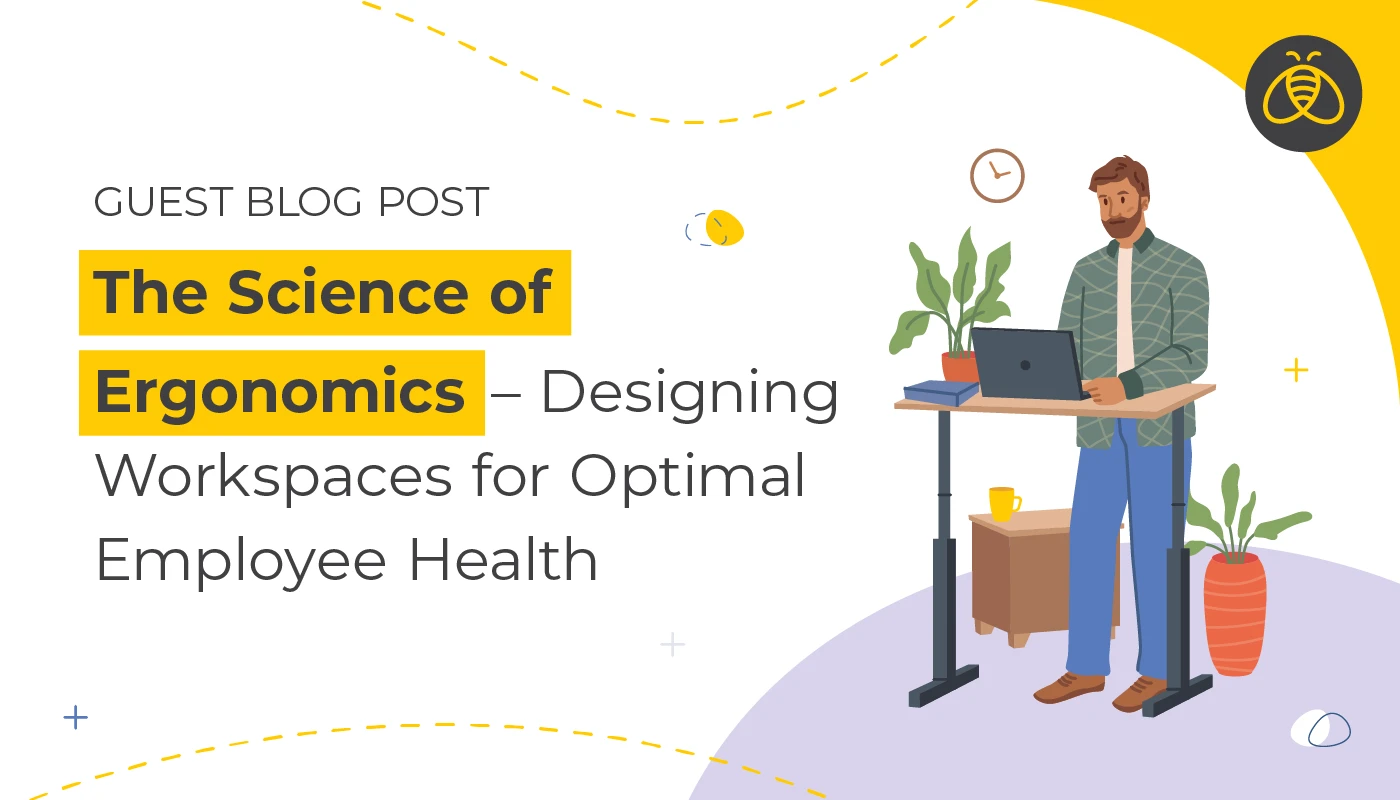The science of ergonomics – designing workspaces for optimal employee health
By: Benefits by Design | Tuesday February 27, 2024
Updated : Monday February 26, 2024
This is a guest blog post by Hillary Potts – content writer.
In today’s work culture, the significance of designing ergonomic workspaces for optimal employee health has risen. It’s a vital aspect that goes beyond aesthetic appeal, directly impacting the productivity and morale of the workforce. This approach to office design is not just about placing furniture or choosing colors; it’s a thoughtful process that intertwines functionality with wellness. By focusing on elements that promote employee health and wellbeing, we can create environments that are not only efficient but also supportive and nurturing.
Crafting comfort: the foundation of workspace design
Comfort in the workplace transcends mere physical ease; it’s about creating an environment where employees feel genuinely supported and motivated. This aspect becomes especially critical during a change such as an office move. You must do more than safely transport equipment and furniture to ensure a successful move. After all, keeping employees happy during and after office moves is about transitioning into a space that enhances wellbeing and productivity.

A well-designed office should cater to both the functional needs and the psychological comfort of its occupants. It’s about bridging the gap between work’s physical and mental aspects, ensuring that the new environment supports the tasks at hand and the people performing them. In this way, a well-planned office design becomes a cornerstone of employee satisfaction and organizational success in any new setting. Now, let’s find out how to design such a space!
1. Ergonomic furniture: enhancing comfort and health
Investing in ergonomic furniture is pivotal for designing workspaces for optimal employee health. Ergonomic chairs that support the natural curve of the spine, height-adjustable desks, and equipment positioned at comfortable heights play a crucial role in preventing work-related discomfort and injuries. On top of that, the strategic placement of monitors at eye level and the use of keyboard trays can reduce neck and shoulder strain.
In addition, providing footrests and wrist supports can further alleviate physical stress. Regularly updating furniture to incorporate the latest ergonomic advancements demonstrates a commitment to employee health and can lead to increased job satisfaction and productivity.
2. Designing with mental health in mind
Incorporating mental health considerations into workspace design is essential to help employees avoid burnout and maintain overall wellbeing. Creating relaxation and social interaction areas can provide employees with spaces to unwind and connect, helping them deal with burnout. Quiet, private areas offer a retreat for those needing a break from the collaborative environment.Regularly engaging with employees to understand their needs and preferences can inform workspace design choices that support mental health. Incorporating elements that reduce stress, such as soft lighting and comfortable seating, and providing resources for mental health support can create a more inclusive and supportive work environment.
6 Dos and Don’ts for Building a Successful Workplace Culture
3. Designing workspaces for optimal employee health: sound management
Effective sound management is crucial in a workplace. Excessive noise can lead to stress and decreased productivity, while a too-quiet environment can feel oppressive. Sound-absorbing materials such as acoustic panels and carpets can significantly reduce noise levels.Providing noise-cancellation headphones and creating designated quiet zones can offer employees a respite from the bustling office environment. Another good idea is to incorporate soothing background sounds or music in common areas, enhancing focus and reducing stress.
4. Biophilic design: bringing nature indoors
Integrating natural elements into the workspace, known as biophilic design, significantly enhances employee wellbeing. Indoor plants purify the air, reduce stress levels, and improve mood. Incorporating natural materials like wood and stone and providing views of the outdoors can create a more relaxing and inviting workplace.

Creating green spaces or small gardens within the office can provide employees with rejuvenating areas. Studies suggest that exposure to nature in the workplace can reduce absenteeism and increase job satisfaction.
5. Color and décor: setting the right tone
The use of color and décor in an office impacts the mood and productivity of employees. Selecting calming colors such as blues and greens for relaxation areas can create a tranquil environment. In contrast, vibrant colors like reds and oranges stimulate energy and creativity in meeting rooms.
Artwork and decorative elements that reflect the company’s values and culture can enhance a sense of belonging. Ergonomically designed decor elements that are visually appealing and functional can contribute to a workspace that promotes wellbeing and inspires creativity.
6. Promoting movement and flexibility
Encouraging physical movement and offering flexible workspace options are vital for employee health. Sit-stand desks encourage regular movement and reduce the risks associated with prolonged sitting. Creating stretching, yoga, or light exercise spaces can promote physical health.
Also, incorporating walking paths inside or near the office can encourage walking meetings, combining work with physical activity. Providing spaces that can be easily reconfigured for different tasks or group sizes encourages flexibility and collaboration, adapting to the diverse needs of employees.
7. Lighting: illuminating the path to wellbeing
Effective lighting is a cornerstone in solutions for common office health problems, particularly those related to vision and mental health. Therefore, natural light should be maximized to boost vitamin D levels and circadian rhythms. High-quality artificial lighting that mimics daylight can be used in areas with limited natural light.

Task lighting should be adjustable to cater to individual needs, reducing eye strain and headaches. Lighting can also create moods in various office areas, such as calming hues in break rooms and brighter tones in meeting areas, contributing to overall wellbeing and energy levels.
Building a healthier tomorrow
Designing workspaces for optimal employee health is an ongoing process that requires attention, innovation, and a deep understanding of human needs. By prioritizing health and wellbeing in our work environments, we enhance productivity and create a foundation for a happier, healthier future.


